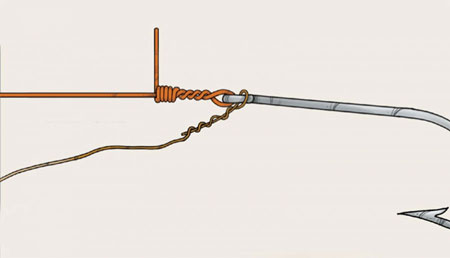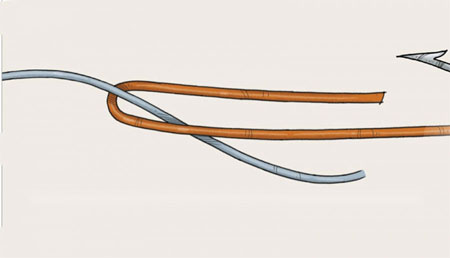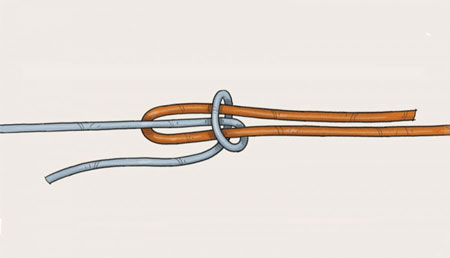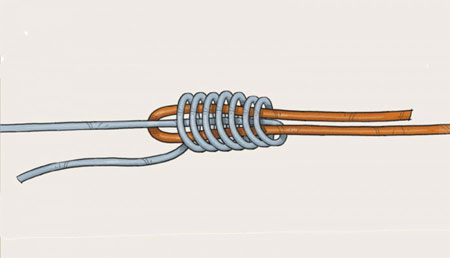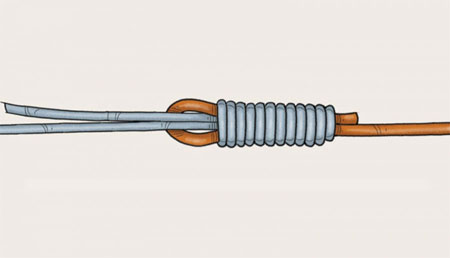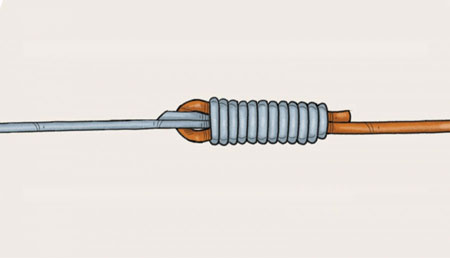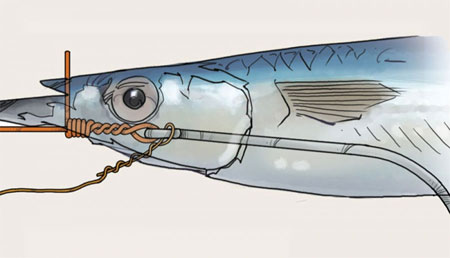Combination leader provides the advantages of monofilament and the safety of wire
By George Poveromo
Illustrations copyright 2013 Joe Mahler www.joemahler.com
RETURN TO HOW TO'S MAIN PAGE - CLICK HERE
When you're trolling for cagey game fish like sailfish, white marlin and tuna, nylon or fluorocarbon monofilament leaders are the norm. The breaking strength of these leaders and accompanying hook size often diminishes accordingly, based on the aggressiveness of the targeted species; it's all about drawing the strike.
But what happens when a wahoo or trophy king mackerel intercepts one of these baits, clipping it off at the leader? From personal experience, it's a gut-wrenching loss.
So how do you maintain the minimal visibility and �action provided by monofilament nylon and fluorocarbon leaders without sacrificing the rig to those toothy predators? Consider incorporating a wire trace into your leader, fine-tuning the length of the wire so it remains hidden under the bait's beak or chin, protruding a few inches beyond its head for cutoff protection. This setup is ideal for ballyhoo, as well as trolling feathers, strip baits and lures.
Best of Both Rigs
Ray McConnell, proprietor of Ray's Offshore Bait and Tackle in Boca Raton, Florida, is an authority on selecting and rigging trolling baits and lures, and he has a wealth of fishing experience, especially in the Bahamas. During a trip to San Salvador aboard Don Strom's Foxy Lady II, with Capt. George Gardner behind the wheel, Strom asked McConnell to put out a couple of his Kingfisher tuna lures. Aware that they were traversing big wahoo waters, McConnell added a trace of No. 10 wire to the 150-pound fluorocarbon leader on one lure, and fished the other lure on a straight fluorocarbon leader. They were using 80-pound-class tackle.
Shortly thereafter, they hooked into a doubleheader. One fish �immediately bit through the �fluorocarbon leader; the other fish, on the leader with the wire trace, was solidly hooked. 'It was a huge fish,'� says McConnell. 'Strom fought that fish with 80-pound-class gear and with heavy pressure for exactly 49 minutes before it got free. What exactly was it? I'm thinking maybe a huge yellowfin. If it was a wahoo, it was a real monster. Regardless of the outcome, that wire trace gave us a shot at that fish, while the pure fluorocarbon leader did not.'�
Custom Fit
McConnell rigs a lot of trolling ballyhoo, as well as his line of tuna lures, with wire-trace leaders. He claims it's imperative to match the wire to the mono leader. Wire that is heavier than the main leader could cut through the mono. He advises using No. 6 single-strand wire with a 60-pound-test nylon or fluorocarbon leader for king mackerel, and No. 7 wire with 80-pound-test mono for general offshore trolling, where wahoo are a possibility.


.jpg)
